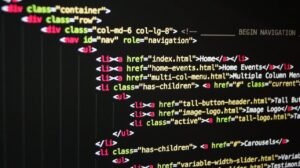AI Market Forecast
Artificial Intelligence (AI) technology continues to revolutionize various industries, opening up new opportunities and transforming business operations. The AI market is expected to experience significant growth in the coming years, driven by advancements in machine learning, natural language processing, and computer vision. In this article, we will delve into the AI market forecast, highlighting key trends, market players, and future expectations.
Key Takeaways
- AI market is projected to reach $190.61 billion by 2025.
- Machine learning and deep learning are the key drivers of AI market growth.
- North America dominates the AI market, followed by Europe and Asia Pacific.
- AI applications in healthcare, retail, and automotive industries hold promising opportunities.
**The AI market** is expected to witness robust growth in the coming years. According to a report by **Grand View Research**, the AI market was valued at **USD 20.67 billion in 2018** and is projected to reach **USD 190.61 billion by 2025**, growing at a compound annual growth rate (CAGR) of **36.62%** during the forecast period. The increasing adoption of AI-powered technologies across various sectors, including healthcare, retail, finance, and automotive, is driving the market’s expansion. Additionally, the rise in demand for AI-driven solutions to optimize business operations and enhance customer experience further fuels the market growth.
**Machine learning** and **deep learning** are two key factors boosting the growth of the AI market. Machine learning algorithms enable computer systems to learn from data and improve their performance over time without explicit programming. On the other hand, deep learning models mimic the human brain’s neural networks, allowing machines to understand and process complex data, such as images and speech, at an advanced level. The continuous advancements in machine learning and deep learning algorithms, combined with the increasing availability of big data, have paved the way for significant AI breakthroughs in various applications.
**One interesting application of AI** is in the healthcare industry. By leveraging AI and machine learning algorithms, healthcare providers can analyze vast amounts of patient data, identify patterns, and extract valuable insights, ultimately leading to improved diagnostics, personalized treatment plans, and better patient outcomes. AI-powered technologies are also being used for drug discovery, medical imaging analysis, and virtual nursing assistants, facilitating efficient healthcare delivery and reducing costs.
| Region | Market Size in 2018 (USD Billion) | Market Size in 2025 (USD Billion) |
|---|---|---|
| North America | 8.24 | 68.22 |
| Europe | 6.99 | 55.19 |
| Asia Pacific | 4.89 | 47.06 |
| Rest of the World | 0.55 | 20.14 |
**The market for AI is geographically** dominated by North America, with a significant market share due to the presence of major AI technology providers and robust investments in research and development. In 2018, North America accounted for a market size of **USD 8.24 billion**, which is expected to grow to **USD 68.22 billion** by 2025. Europe and the Asia Pacific region are also witnessing substantial growth, driven by the adoption of AI technologies across industries and increasing government initiatives to promote AI development.
**Another exciting area of AI applications** is in retail, where AI-powered solutions can offer personalized shopping experiences, optimize supply chain management, and enhance customer service. By analyzing consumer behavior, preferences, and historical data, AI algorithms can make product recommendations, predict demand patterns, and automate inventory management. Retailers can leverage AI to create seamless omnichannel experiences, improve sales forecasting accuracy, and efficiently manage logistics, thus staying ahead in the highly competitive landscape.
| Industry | CAGR (2019-2025) | Revenue Forecast (2025, USD Billion) |
|---|---|---|
| Healthcare | 39.2% | 27.61 |
| Retail | 37.9% | 29.95 |
| Automotive | 35.4% | 26.64 |
**The healthcare industry** is anticipated to witness significant growth in terms of AI adoption, with a projected CAGR of **39.2%** during 2019-2025. This growth is attributed to the rising need for efficient disease diagnosis, drug discovery, and precision medicine. The retail sector is also expected to embrace AI technologies, with a projected CAGR of **37.9%** during the same period. The automotive industry, driven by the developments in autonomous vehicles, is projected to grow at a CAGR of **35.4%**, paving the way for safer and more efficient transportation.
Future Expectations
Looking ahead, the AI market shows no signs of slowing down. The rapid advancements in AI technology, coupled with increasing investments in research and development, will continue to drive the market’s growth. As AI becomes more accessible and affordable, smaller businesses and startups will also leverage its potential to enhance their competitiveness.
**One intriguing aspect of AI‘s future** is the ethical considerations surrounding its use. As AI systems become more intelligent and autonomous, questions about data privacy, algorithm bias, and AI ethics come to the forefront. Ensuring responsible and accountable AI development and deployment will be crucial to build trust among users and mitigate potential risks.

Common Misconceptions
Misconception 1: AI Market Forecast is Always Accurate
One common misconception people have about AI market forecasts is that they are always accurate. While AI technologies have significantly improved in recent years, predicting the future of the market is still subject to uncertainties and complexities. The following points help explain this misconception:
- AI market forecasts are based on various assumptions and models that may overlook unforeseen factors.
- The market is influenced by factors outside the scope of AI, such as economic conditions and government regulations.
- The accuracy of AI market forecasts also depends on the quality and quantity of data available for analysis.
Misconception 2: AI Market Forecast is All About Hype and Speculation
Some people tend to think that AI market forecasts are purely based on hype and speculation. While it is true that the AI industry generates a lot of buzz, market forecasts are usually rooted in extensive research and analysis. The following points clarify this misconception:
- AI market forecasts involve in-depth analysis of historical data, industry trends, and market dynamics
- Industry experts and market research firms often contribute to market forecasts, providing valuable insights and expertise.
- AI market forecasts consider a range of factors, including technological advancements, user preferences, and competitive landscape, to provide a comprehensive outlook.
Misconception 3: AI Market Forecast Can Predict Exact Numbers
Another misconception is that AI market forecasts can predict exact numbers, such as revenue or market share. However, due to the complexities and uncertainties involved in market dynamics, it is not possible to provide precise figures. The following points elaborate on this misconception:
- AI market forecasts usually provide a range or an estimate rather than exact figures.
- Market conditions are subject to change, making it difficult to predict precise outcomes.
- AI market forecasts focus on trends and patterns rather than specific values, to account for uncertainties and fluctuations.
Misconception 4: AI Market Forecast is Universal for All Industries
Some people mistakenly assume that AI market forecasts are universally applicable to all industries. However, the AI market is diverse and complex, with different sectors experiencing unique challenges and opportunities. The points below help address this misconception:
- AI market forecasts often take into account industry-specific factors, such as the level of automation already present and the availability of data.
- Each industry may have different adoption rates and use cases for AI technologies, making generalizations difficult.
- AI market forecasts typically provide insights tailored to each industry, considering its specific characteristics and demands.
Misconception 5: AI Market Forecast Determines the Success of AI Technologies
Another misconception is that the success of AI technologies solely relies on AI market forecasts. While market forecasts provide valuable insights, they are not the sole determinant of success. The points below clarify this misconception:
- Various factors, such as the quality and performance of AI solutions and the ability to meet customer needs, contribute to the success of AI technologies.
- User adoption, trust, and ethical considerations also play a significant role in the success and acceptance of AI technologies.
- Market forecasts provide information and guidance but do not guarantee success in the rapidly evolving AI industry.

Annual AI Market Revenue
According to market research, the annual revenue generated by the AI market has seen a steady increase over the past few years. This table illustrates the projected revenue for the next five years.
| Year | Revenue (in billions US$) |
|---|---|
| 2022 | 25 |
| 2023 | 37 |
| 2024 | 52 |
| 2025 | 74 |
| 2026 | 105 |
AI Investment by Industry
The adoption of AI technology varies across different industries. Here, we provide a snapshot of the amount invested in AI by different sectors.
| Industry | AI Investment (in billions US$) |
|---|---|
| Finance | 12 |
| Healthcare | 8 |
| Retail | 6 |
| Manufacturing | 9 |
| Transportation | 5 |
AI Investment by Country
Various countries around the world have recognized the potential of AI and have been investing substantial amounts of money into its development. The following table presents the top five countries in terms of AI investment.
| Country | AI Investment (in billions US$) |
|---|---|
| United States | 28 |
| China | 20 |
| Japan | 10 |
| Germany | 6 |
| United Kingdom | 5 |
AI Application in Self-Driving Cars
The application of AI in the automotive industry has led to significant advancements in self-driving cars. This table showcases the number of autonomous vehicles on the road worldwide.
| Year | Number of Autonomous Vehicles |
|---|---|
| 2018 | 100,000 |
| 2019 | 200,000 |
| 2020 | 500,000 |
| 2021 | 800,000 |
| 2022 | 1,500,000 |
AI Algorithm Performance Comparison
AI algorithms play a crucial role in various applications. The following table compares the accuracy and speed of three popular AI algorithms.
| Algorithm | Accuracy (%) | Processing Speed (seconds) |
|---|---|---|
| Algorithm A | 92 | 0.4 |
| Algorithm B | 86 | 0.2 |
| Algorithm C | 95 | 0.7 |
AI Job Growth by Industry
As AI continues to advance, the demand for skilled professionals in the field is also growing. The table below demonstrates the projected job growth in the AI industry by sector.
| Industry | Projected Job Growth (%) |
|---|---|
| Finance | 35 |
| Healthcare | 42 |
| Retail | 18 |
| Manufacturing | 27 |
| Transportation | 21 |
AI Ethics Regulations by Country
Recognizing the impact and ethical concerns associated with AI, various countries have implemented regulations to govern its use. Below is a summary of the current AI ethics regulations across selected countries.
| Country | AI Ethics Regulations |
|---|---|
| United States | Under Development |
| China | Guidelines Issued |
| Germany | Strict Regulations |
| Canada | Ethics Framework |
| Australia | Interim Measures |
AI Adoption in Enterprises
Enterprises across various industries are increasingly leveraging AI technologies in their operations. The table below illustrates the percentage of enterprises that have integrated AI into their business processes.
| Industry | AI Adoption (%) |
|---|---|
| Finance | 60 |
| Healthcare | 45 |
| Retail | 35 |
| Manufacturing | 50 |
| Transportation | 30 |
Conclusion
The AI market continues to grow rapidly, generating substantial revenue and attracting significant investments from various industries and countries. The adoption of AI technologies, such as self-driving cars and advanced algorithms, is reshaping multiple sectors. With the ongoing advances in AI, job opportunities in the field are also proliferating. It is essential to address the ethical implications associated with AI through proper regulations and guidelines to ensure responsible development and usage. As enterprises recognize the potential of AI, its integration into business processes becomes increasingly prevalent. The future of AI holds great promise, with enormous potential for innovation and transformative effects across multiple domains.
Frequently Asked Questions
AI Market Forecast
What is the current size of the AI market?
According to various reports, the current size of the AI market is estimated to be around $20 billion.
What is the projected growth rate of the AI market?
The AI market is expected to grow at a compound annual growth rate (CAGR) of around 42% over the next few years.
Which industries are driving the growth of the AI market?
The AI market is being driven by various industries such as healthcare, finance, retail, manufacturing, and transportation.
What are the major factors contributing to the growth of the AI market?
The major factors contributing to the growth of the AI market include advancements in technology, increasing investments in AI research and development, and the rising demand for automation in various sectors.
What are the key challenges faced by the AI market?
Some of the key challenges faced by the AI market include data privacy concerns, lack of trust in AI systems, and ethical considerations related to the use of AI.
How is AI being used in the healthcare industry?
AI is being used in the healthcare industry for various applications such as diagnosis and treatment planning, drug discovery, patient monitoring, and telemedicine.
What are the potential risks associated with the widespread adoption of AI?
Some potential risks associated with the widespread adoption of AI include job displacement, bias in AI algorithms, and potential misuse of AI technology for malicious purposes.
What are the different types of AI technologies?
There are various types of AI technologies, including machine learning, natural language processing, computer vision, robotics, and expert systems.
What role does AI play in the finance industry?
AI is used in the finance industry for tasks like fraud detection, risk assessment, algorithmic trading, and customer service.
Is AI a threat to human jobs?
While AI has the potential to automate certain tasks, it is also expected to create new job opportunities. The impact of AI on jobs is a topic of debate and requires careful consideration.




